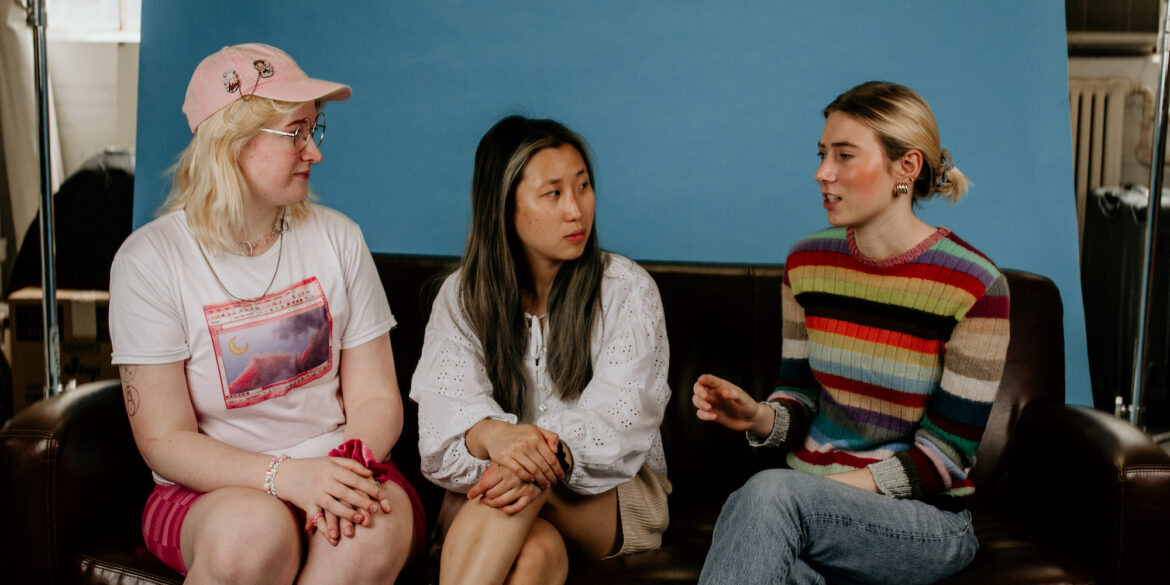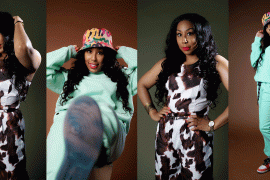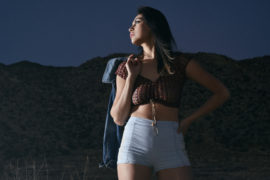During the past two weeks, we’ve highlighted collaboration in the Indy community (see: Streetly; Creative Mornings; PUP, MELI, Howl + Hide). Now, we’re turning our attention a bit closer to the proverbial PATTERN home as we explore collaboration with a few of our designers.
While the list of design contributors for PATTERN is a long one, this conversation includes Leah Brinkman (current fellow), Nicole Hey (current intern), and Carrie Kelb (past fellow). As the current Writing Intern, I had the pleasure of sitting in as the three traded stories, inspiration, and lessons on graphic design and collaboration in the field.
Experience with professional collaborations
Nicole Hey: I’m curious because I have the most to gain here! What does collaboration look like for designers for you guys? Any advice?
Carrie Kelb: I’m collaborating with a lot of different people. There’s the client, the internal design team, the copywriter team, the account team. There’s a lot of communication, talking about what each other’s needs are and ways we can help each other out. It’s really just bringing what you can contribute to the table.
Leah Brinkman: I’ve been the only designer on the team most of the time. I think, as the designer, you often have to be the advocate for design because you’re usually with people who tend to think in a very practical way. Sometimes you have to speak up and figure out that balance.
Navigating personal style in school vs. the professional design landscape
NH: Since I’m still in school, I don’t have to sacrifice a lot. I usually tend toward really big, chunky, colorful–you know those blocks that kids use to build? That’s how I would describe my creative style.
CK: I had the same experience when I was in school. You’re basically your own client. It is a weird shift to then work with actual clients–you try to find a way to make a little part of you happy, but sometimes you do have to let go. It does depend on the client. Sometimes clients are going to tell you no and you learn to put up with it. Other times, it’s collaborative and you can push your thoughts and feedback a little more. But I think you learn to find happiness within the work even if it’s not exactly the result that you, on your own, would have made.
LB: It’s interesting, too, because if you’re working for a bigger corporate client, you are working with a pretty established, set brand guide. In that scenario, you’re not necessarily going to have your creative voice come through–it’s working with the human but also, then, that brand name. Sometimes when I’m working for people, I go in knowing that it isn’t going to be my style and that’s okay. I can still guide them in the right direction.
How feedback shapes the creative process
NH: I love feedback. This is my form of collaboration since I don’t have a client or a team at school. It has expanded my style. Someone will say You should try opacity effects, which I don’t do a lot of, but then I’m like This is kind of cool. I’m gonna do this now. So expanding my horizons is feedback for me.
LB: I like feedback a lot. You come in with an open mind and then, at the end of the day, you get to decide what feedback you take and what feedback you don’t. When I was in school, I always loved big group critiques. You’re bouncing ideas off of each other and someone gets so excited and starts drawing on the board. I’ve experienced that a little bit in jobs–you come in with your very rough, initial concepts and everyone starts ping-ponging ideas. That’s always the part of the process that’s the most fun for me.
CK: I like asking people about my work. It’s nice when they can help you see a different way of looking at it, especially if you’re in a rut.
Ways collaboration pushes as a design
CK: It pushes you to think differently, to see things from other points of view. It also allows you to achieve things you wouldn’t have been able to do otherwise. I work on a lot of animation projects. I don’t animate–I make storyboards and then work with a team of animators who can take that and turn it into this incredible, Pixar-level thing that just blows my mind. So you’re able to work with people to make things that you could only dream of.
LB: I think Carrie put it great: design is kind of like art in context. As a fine artist, you can make something for yourself, sell it, and have it be your style. But design is inherently for something, for someone. It’s pushed me to view the world from so many different types of people’s perspectives. So I feel like collaboration is baked into the word “design” itself.
NH: You can’t have one style. You can have tendencies, but like Carrie was saying, you need to be able to flex your thing and change. Collaborating expands your horizons.
Favorite collaborations so far
CK: Mine would be PATTERN. It’s an amazing thing: you see the writers go off and do their thing, you hear about the photo shoots that are happening, and it’s always a really exciting thing when Polina sends over all that content for me to play with. Lindsay Hadley, the Design Director–I loved talking about spreads with her and going over designs.
LB: My most rewarding collaboration was for one of my co-ops back when I was in school. I worked with some other industrial designers and a developer, and we created this web tool for Cincinnati Children’s Hospital. I really enjoyed that. The hospital staff was so passionate and invested, the ideal client you could work for. When we had critique sessions, you could tell they were really excited and were trying to teach us about what they were doing and then also were trying to learn from us. They were really great people to work for.
NH: I would also say PATTERN. It’s really nice to see Kate do her writing thing, Chelsie go take her photos, and it all comes together in this very separate but very unified thing. I can make sure my designs work for you guys, but I also have a little more creative control than I would on a design team.
Many of the covers you see heading our articles and beautifying our social media pages are the products of our graphic designers’ talent and vision.
Although the running joke between graphic designers is that they keep to the wings of the stage, noses perpetually bent to screens, collaboration invariably shapes creative processes and final products in all domains–graphic design included.
Thank you to these three for putting a face to the hands constantly at work behind the scenes (and screens). PATTERN salutes you!





